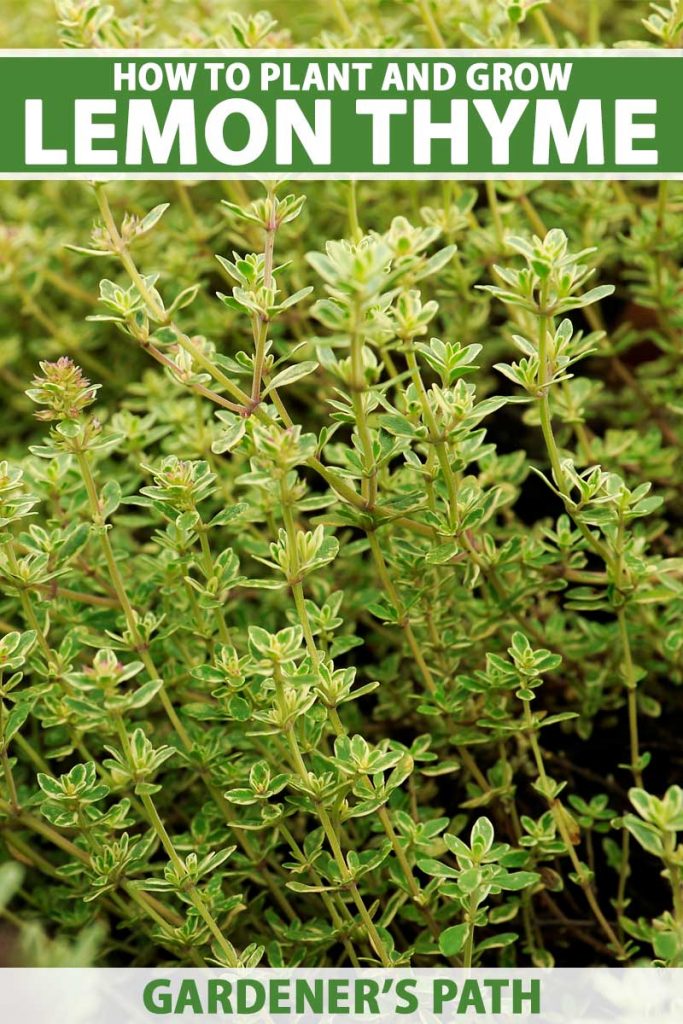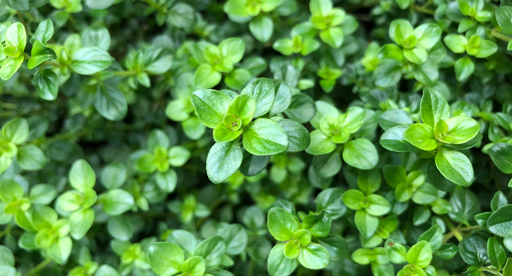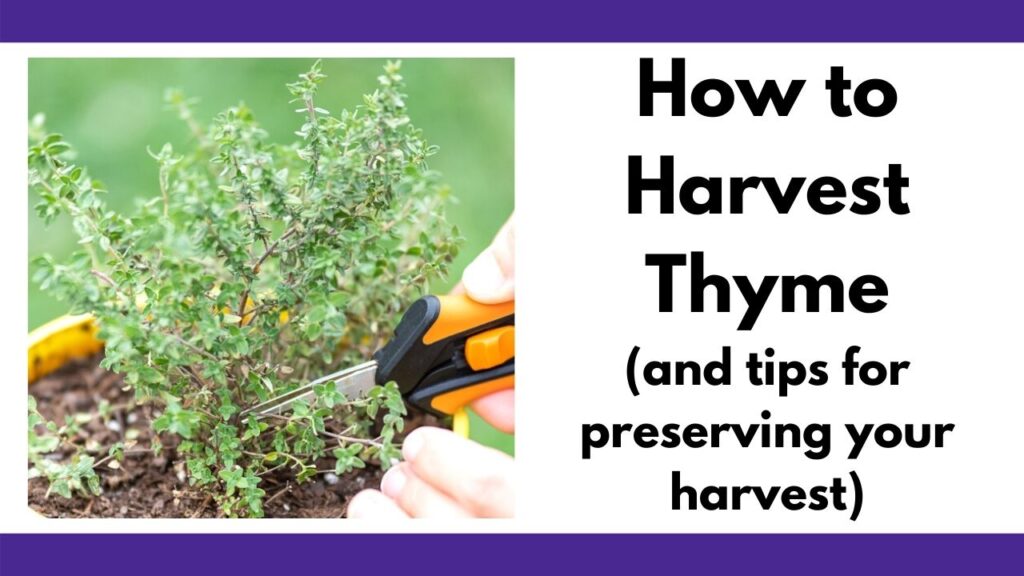Understanding Thyme Plant Size and Growth Habits
Thyme is a low-growing, spreading herb that can be used in a variety of culinary and ornamental applications. Whether you’re a seasoned gardener or a curious cook, understanding how big thyme grows is essential for making the most of this versatile herb. Thyme plants typically grow to be around 6-12 inches tall and 12-18 inches wide, but their size can vary depending on factors such as climate, soil quality, and pruning practices. By understanding how thyme grows, you can better plan your garden or kitchen layout to accommodate this fragrant herb.
Thyme is a member of the mint family and is known for its tiny leaves and delicate stems. It is a hardy perennial that can thrive in a variety of conditions, but it prefers well-draining soil and full sun. Thyme is also a low-maintenance herb that requires minimal care, making it a great choice for busy gardeners or those new to herb gardening. Despite its small size, thyme packs a big punch when it comes to flavor and fragrance, making it a popular choice for cooking and crafts.
When it comes to understanding how big thyme grows, it’s essential to consider the different varieties of thyme. Some varieties, such as creeping thyme, can spread quickly and form a dense mat, while others, such as upright thyme, can grow taller and more compact. By choosing the right variety of thyme for your needs, you can ensure that your plants grow to be the right size for your garden or kitchen.
In addition to understanding the different varieties of thyme, it’s also essential to consider the growing conditions. Thyme prefers well-draining soil and full sun, but it can also thrive in partial shade. By providing your thyme plants with the right growing conditions, you can help them grow to be healthy and robust.
Overall, understanding how big thyme grows is essential for making the most of this versatile herb. By considering the different varieties of thyme and the growing conditions, you can ensure that your plants grow to be the right size for your garden or kitchen. Whether you’re a seasoned gardener or a curious cook, thyme is a great choice for anyone looking to add a little flavor and fragrance to their life.
Factors Affecting Thyme Plant Size: Climate, Soil, and Pruning
When it comes to understanding how big thyme grows, it’s essential to consider the factors that affect its size. Climate, soil quality, and pruning practices are three key factors that can impact the growth and size of thyme plants. By understanding how these factors interact, gardeners and cooks can optimize the growth of their thyme plants and make the most of this versatile herb.
Climate is a critical factor in determining the size of thyme plants. Thyme grows best in temperate climates with moderate temperatures and rainfall. In areas with extreme temperatures or drought, thyme plants may become stressed and grow more slowly. In contrast, thyme plants grown in areas with mild winters and cool summers tend to grow more vigorously and reach their full potential.
Soil quality is another important factor in determining the size of thyme plants. Thyme grows best in well-draining soil that is rich in organic matter. Soil that is too dense or poorly draining can cause thyme roots to rot, leading to stunted growth and reduced yields. By using a high-quality potting mix or adding organic matter to the soil, gardeners can create an optimal growing environment for their thyme plants.
Pruning practices also play a critical role in determining the size of thyme plants. Regular pruning can help control the size of thyme plants and promote bushy growth. By pinching off the tips of the stems, gardeners can encourage thyme plants to grow more compactly and produce more leaves. Pruning also helps to prevent thyme plants from becoming leggy and promotes a more balanced growth habit.
By understanding the factors that affect thyme plant size, gardeners and cooks can take steps to optimize the growth of their thyme plants. By providing the right climate, soil, and pruning conditions, thyme plants can grow to be healthy, robust, and full of flavor. Whether you’re growing thyme for culinary or ornamental purposes, understanding how big thyme grows is essential for making the most of this versatile herb.
How to Measure Thyme Plant Growth: Height, Spread, and Density
Measuring the growth of thyme plants is essential to understanding how big they can grow and how to optimize their growth. By tracking the height, spread, and density of thyme plants, gardeners and cooks can gain valuable insights into the plant’s growth habits and make informed decisions about pruning, fertilizing, and harvesting.
To measure the height of thyme plants, use a ruler or measuring tape to record the distance from the base of the plant to the tip of the tallest stem. Take multiple measurements at different points around the plant to get an accurate average height. For example, if you’re wondering how big thyme grows, you might measure the height of the plant at several points to determine its overall height.
In addition to measuring height, it’s also important to track the spread of thyme plants. Use a ruler or measuring tape to record the distance from the center of the plant to the outermost edge of the foliage. This will give you an idea of how wide the plant is growing and whether it’s becoming too leggy or sparse.
Density is another important factor to consider when measuring thyme plant growth. To measure density, count the number of stems and leaves within a given area, such as a square inch or square centimeter. This will give you an idea of how densely the plant is growing and whether it’s becoming too crowded or sparse.
By tracking the height, spread, and density of thyme plants, gardeners and cooks can gain a better understanding of how big thyme grows and how to optimize its growth. Regular measurements can help identify potential problems, such as overcrowding or nutrient deficiencies, and inform decisions about pruning, fertilizing, and harvesting.
When measuring thyme plant growth, it’s also important to consider the time of year and the plant’s growth stage. Thyme plants typically grow more slowly during the winter months and more quickly during the spring and summer. By taking this into account, gardeners and cooks can adjust their measurements and make more accurate assessments of the plant’s growth.
Thyme Plant Growth Stages: From Seedling to Maturity
Thyme plants go through several growth stages, from seedling to maturity. Understanding these stages is essential to providing the right care and conditions for optimal growth. When wondering how big thyme grows, it’s helpful to know the different stages of growth and what to expect.
The first stage of thyme plant growth is the seedling stage. Thyme seedlings typically emerge within 1-2 weeks of sowing and have two small leaves. During this stage, the seedlings are vulnerable to pests and diseases, so it’s essential to provide them with a warm and humid environment.
As the seedlings grow, they enter the juvenile stage. During this stage, the plants develop their root system and start to produce more leaves. The juvenile stage typically lasts for several weeks, during which time the plants require regular watering and fertilization.
Once the plants have reached a height of around 6-8 inches, they enter the adult stage. During this stage, the plants produce flowers and seeds, and their growth rate slows down. The adult stage is the final stage of thyme plant growth, and it’s during this stage that the plants reach their full height and spread.
Thyme plants can take several months to reach their full height and spread. The exact time frame depends on factors such as climate, soil quality, and pruning practices. In general, thyme plants can take anywhere from 3-6 months to reach their full height and spread.
Understanding the different growth stages of thyme plants is essential to providing the right care and conditions for optimal growth. By knowing what to expect at each stage, gardeners and cooks can take steps to promote healthy growth and prevent common problems like root rot and pests.
When wondering how big thyme grows, it’s also helpful to consider the specific variety of thyme. Different varieties of thyme have different growth habits and sizes, so it’s essential to research the specific variety you’re growing to understand its growth patterns.
Maximizing Thyme Plant Growth: Tips and Tricks
To maximize thyme plant growth, it’s essential to provide the right conditions and care. Thyme plants require well-draining soil, full sun, and regular watering to thrive. However, there are several tips and tricks that can help promote healthy growth and prevent common problems like root rot and pests.
One of the most effective ways to maximize thyme plant growth is to use fertilizers. Thyme plants benefit from regular fertilization, especially during the growing season. Use a balanced fertilizer that is high in phosphorus to promote root growth and development.
Mulching is another technique that can help promote healthy growth and prevent common problems. Mulch helps to retain moisture in the soil, suppress weeds, and regulate soil temperature. Use a thin layer of organic mulch like straw or bark chips around the base of the plants.
Providing support is also essential for maximizing thyme plant growth. Thyme plants can become leggy and sprawling if not provided with support. Use a trellis or stake to provide support and keep the plants upright.
Pruning is also an essential technique for maximizing thyme plant growth. Prune the plants regularly to promote bushy growth and prevent them from becoming leggy. Pinch off the tips of the stems to encourage branching and prevent the plants from flowering.
Another technique that can help promote healthy growth is to divide and replant the thyme plants regularly. Thyme plants can become pot-bound and stagnant if not divided and replanted regularly. Divide the plants every 2-3 years to promote healthy growth and prevent root bound.
By following these tips and tricks, gardeners and cooks can maximize thyme plant growth and promote healthy development. Remember to provide the right conditions and care, and don’t hesitate to experiment with different techniques to find what works best for your thyme plants.
When wondering how big thyme grows, it’s also helpful to consider the specific variety of thyme. Different varieties of thyme have different growth habits and sizes, so it’s essential to research the specific variety you’re growing to understand its growth patterns.
Common Thyme Varieties: Differences in Growth Habit and Size
There are several common thyme varieties, each with its own unique growth habit and size. Understanding the differences between these varieties can help gardeners and cooks choose the right thyme for their needs. When wondering how big thyme grows, it’s essential to consider the specific variety of thyme.
Creeping thyme (Thymus serpyllum) is a popular variety of thyme that spreads quickly and forms a dense mat. It grows to be around 1-2 inches tall and 6-12 inches wide, making it an excellent choice for groundcover or container gardens.
Upright thyme (Thymus vulgaris) is another common variety of thyme that grows to be around 6-12 inches tall and 3-6 inches wide. It has a more compact growth habit than creeping thyme and is often used in cooking and herbal remedies.
Elfin thyme (Thymus serpyllum ‘Elfin’) is a dwarf variety of thyme that grows to be around 1-2 inches tall and 3-6 inches wide. It has a compact growth habit and is often used in container gardens and rock gardens.
Lemon thyme (Thymus x citriodorus) is a variety of thyme that has a distinctive lemon flavor and aroma. It grows to be around 6-12 inches tall and 3-6 inches wide, making it an excellent choice for cooking and herbal remedies.
By understanding the differences between these common thyme varieties, gardeners and cooks can choose the right thyme for their needs. Whether you’re looking for a groundcover, a compact herb for cooking, or a unique variety for container gardens, there’s a thyme variety that’s right for you.
When growing thyme, it’s essential to consider the specific growth habits and sizes of the different varieties. By providing the right conditions and care, gardeners and cooks can promote healthy growth and maximize the potential of their thyme plants.
Thyme Plant Growth in Containers: Special Considerations
Growing thyme in containers can be a great way to add this versatile herb to your garden or indoor space. However, container-grown thyme requires special considerations to ensure optimal growth and prevent common problems. When wondering how big thyme grows in containers, it’s essential to consider the specific growing conditions and needs of the plant.
Choosing the right pot size is crucial for container-grown thyme. Thyme plants prefer well-draining soil and a pot that is at least 6-8 inches deep. This will provide the roots with enough room to grow and prevent the soil from becoming waterlogged.
The soil mix is also important for container-grown thyme. A well-draining potting mix that is specifically designed for herbs is ideal. Avoid using regular potting soil, as it can retain too much water and cause the roots to rot.
Watering is another critical aspect of growing thyme in containers. Thyme plants prefer moist soil, but they can be susceptible to overwatering. Check the soil daily, and water only when the top inch of soil feels dry to the touch.
Fertilization is also important for container-grown thyme. Use a balanced fertilizer that is specifically designed for herbs, and follow the instructions on the label for application rates.
Pruning is also essential for container-grown thyme. Regular pruning will help to promote bushy growth and prevent the plant from becoming leggy. Pinch off the tips of the stems to encourage branching and prevent the plant from flowering.
By following these special considerations, gardeners and cooks can successfully grow thyme in containers and enjoy the many benefits of this versatile herb. Whether you’re growing thyme for culinary or ornamental purposes, container-grown thyme can be a great addition to your garden or indoor space.
Harvesting Thyme: How to Prune for Optimal Growth and Flavor
Harvesting thyme is an essential part of maintaining the health and flavor of the plant. When wondering how big thyme grows, it’s essential to consider the harvesting process and how it affects the plant’s growth. Regular harvesting can help encourage bushy growth and prevent the plant from becoming leggy.
To harvest thyme, simply pinch or cut off the tips of the stems. This will help to promote branching and prevent the plant from flowering. Use scissors or pinch off the tips with your fingers, depending on the size of the plant and the desired harvest.
It’s essential to harvest thyme regularly to promote optimal growth and flavor. Regular harvesting will help to encourage bushy growth and prevent the plant from becoming leggy. It will also help to promote root growth and prevent the plant from becoming pot-bound.
When harvesting thyme, it’s also essential to consider the time of day and the weather. Harvest thyme in the morning, after the dew has dried but before the heat of the day. Avoid harvesting thyme during periods of extreme weather, such as during heavy rain or intense heat.
Thyme can be harvested at any time of the year, but the best time to harvest is during the spring and summer months when the plant is actively growing. During this time, the leaves are at their most flavorful and aromatic.
By following these tips and techniques, gardeners and cooks can harvest thyme with confidence and enjoy the many benefits of this versatile herb. Whether you’re using thyme for culinary or ornamental purposes, regular harvesting is essential for maintaining the health and flavor of the plant.






